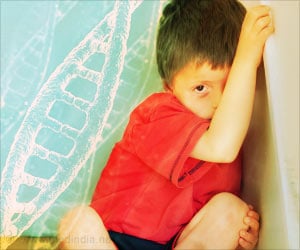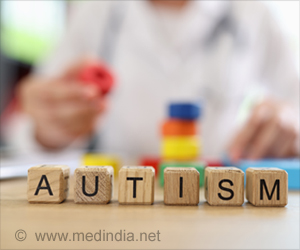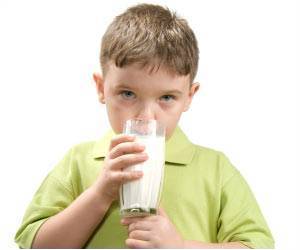Exploring the intricate link between autism and PTSD: understanding, treating, and preventing the complex interplay.
- Individuals with autism are more vulnerable to PTSD due to heightened stress sensitivity and social challenges
- Symptoms of both conditions overlap, complicating diagnosis and treatment
- Trauma-informed care, early intervention, and community support are crucial for managing co-occurring PTSD and autism
Autism Spectrum Disorder and Post-Traumatic Stress Disorder: An unexplored co-occurrence of conditions
Go to source).
TOP INSIGHT
Individuals with autism are not only susceptible to PTSD but may also experience worsening of core traits. #autismPTSD #complexinterlink #medindia
Causes of the Autism-PTSD link
The link between PTSD and autism is multifaceted, influenced by various factors that intersect and exacerbate each other.Some causes contributing to the link between PTSD and autism:
1. Heightened Sensitivity to Stress:
- Individuals with autism are more sensitive to stress due to neurobiological differences and sensory challenges.
- Increased vulnerability to PTSD from even mild traumatic events.
- Social interaction difficulties in autism increase susceptibility to bullying and victimization.
- Greater likelihood of experiencing traumatic events due to social challenges.
- Difficulty expressing emotions and seeking support hinders communication about distress.
- Impedes access to interventions and support post-trauma.
- Common in autism, sensory sensitivities are aggravated by traumatic events.
- Heightened distress and dysregulation result from increased sensitivity.
- Autism-related neurobiological differences amplify stress reactivity and hinder trauma processing.
- Increases risk of developing PTSD.
- Challenges in interpreting social cues raise the risk of misinterpreting situations.
- Contributes to exposure to traumatic events and difficulty seeking help.
- Similar symptoms between PTSD and autism complicate diagnosis and treatment.
- Challenges in addressing both conditions effectively arise from symptom overlap.
- Disruptions in routine, changes in living situations, and adverse childhood experiences exacerbate aggravate the symptoms of PTSD and autism.
- Environmental stressors contribute to PTSD development in individuals with autism.
Symptoms of the Autism-PTSD link
Some symptoms commonly observed in individuals who experience both conditions:1. Aggravated Responses to Stress:
- Both PTSD and autism lead to exaggerated responses to stressors
- Manifests as increased anxiety, hypervigilance, and difficulty coping with stress
- Both conditions involve difficulties in social interaction and communication
- Individuals struggle with social cues and maintaining relationships, leading to isolation
- Difficulty managing and expressing emotions is common
- Mood swings, irritability, and outbursts are prevalent responses to stress
- Repetitive movements, routines, or interests are hallmark features
- Intensifies as coping mechanisms or ways to self-soothe in response to stress
- Active avoidance of reminders of traumatic events
- Extends to social situations, sensory stimuli, or changes in routine
- Heightened arousal and constant vigilance for threats
- Results in sensory overload, anxiety, and difficulty relaxing
- Insomnia, nightmares, and disrupted sleep patterns are common
- Related to past traumas or sensory sensitivities
- Exacerbated by traumatic experiences.
- Heightened sensitivity to noise, light, touch, or smell.
- Impaired ability to regulate emotions and behaviors.
- Struggle with self-soothing techniques and managing overwhelming emotions.
- Stemming from past traumas and social challenges.
- Difficulty forming and maintaining trusting relationships, leading to isolation.
Treatment of the Autism-PTSD link
1. Comprehensive Assessment:A thorough assessment by a qualified mental health professional is essential to accurately diagnose and understand the co-occurring symptoms of PTSD and autism (2✔ ✔Trusted Source
PTSD and autism spectrum disorder: Co-morbidity, gaps in research, and potential shared mechanisms
Go to source).
The assessment should include an evaluation of trauma history, PTSD symptoms, autism-related difficulties, sensory sensitivities, and any other relevant factors.
2. Integrated Treatment Planning:
Treatment planning should be collaborative and integrated, involving input from mental health professionals, autism specialists, and other relevant professionals.
The treatment plan should address both the symptoms of PTSD and the core features of autism, taking into account the interplay between the two conditions.
3. Trauma-Informed Therapy:
Trauma-informed therapy, such as cognitive-behavioral therapy (CBT), eye movement desensitization and reprocessing (EMDR), or narrative exposure therapy (NET), can help individuals process traumatic memories and reduce PTSD symptoms.
Therapists should adapt trauma-focused interventions to accommodate the sensory sensitivities, communication challenges, and cognitive differences associated with autism.
4. Behavioral Interventions:
Behavioral interventions, such as Applied Behavior Analysis (ABA) or Social Skills Training, can help individuals with autism learn coping skills, emotion regulation strategies, and social communication techniques.
These interventions should be tailored to address the specific needs and challenges of individuals with co-occurring PTSD, incorporating trauma-informed principles and strategies.
5. Sensory Integration Techniques:
Sensory integration techniques, such as sensory diets, environmental modifications, and sensory-based activities, can help individuals with autism manage sensory sensitivities and reduce distress.
Occupational therapists trained in sensory integration therapy can provide guidance and support in implementing sensory strategies tailored to the individual’s needs.
6. Medication Management:
Medication may be prescribed to manage specific symptoms of PTSD or co-occurring conditions such as anxiety, depression, or sleep disturbances.
Psychiatric medication should be carefully monitored and adjusted based on individual response and tolerance, with consideration of potential interactions with autism-related symptoms.
7. Family and Caregiver Support:
Family therapy and caregiver support can help families understand and cope with the challenges of supporting a loved one with co-occurring PTSD and autism.
Education, training, and respite services can provide caregivers with the knowledge and resources needed to support their loved ones effectively.
8. Community Resources and Advocacy:
Access to community resources, support groups, and advocacy organizations can provide individuals with autism and PTSD with additional support, information, and social connections.
Advocacy efforts can promote awareness, acceptance, and inclusion of individuals with co-occurring PTSD and autism in healthcare, education, and community settings.
Prevention
1. Early Identification and Intervention:Early identification of autism and timely access to intervention services can address developmental challenges and support healthy social-emotional growth. Similarly, identifying trauma exposure early and providing trauma-focused interventions can prevent PTSD symptoms from worsening and minimize long-term effects.
2. Trauma-Informed Care:
Implementing trauma-informed practices in various settings can create supportive environments that prevent re-traumatization and facilitate healing. Training professionals to recognize trauma signs and offer appropriate support can prevent worsening PTSD symptoms in individuals with autism.
3. Educational Programs:
Implementing trauma-informed practices in different settings can prevent re-traumatization and aid healing. Training professionals to recognize trauma signs can prevent worsening PTSD symptoms in autistic individuals.
4. Social Support Networks:
Strong social networks and positive interactions offer a sense of belonging, reducing isolation and loneliness in individuals with autism. Fostering inclusive communities protects against trauma’s negative effects and enhances mental well-being.
5. Safe and Supportive Environments:
Creating safe environments at home, school, and in the community reduces exposure to trauma and minimizes re-traumatization. Sensory-friendly practices, clear routines, and relaxation opportunities support individuals with autism in managing stress.
6. Crisis Intervention and Support Services:
Access to crisis intervention services and trauma-informed support helps individuals with autism and PTSD during crises. Counseling, therapy, and support groups aid in processing experiences and building resilience.
7. Advocacy and Awareness:
Advocating for policies promoting trauma-informed care and mental health awareness improves support for those with PTSD and autism. Increasing public awareness of trauma’s link to autism reduces stigma and encourages early intervention.
Research Findings
Recent research has elucidated the neurobiological mechanisms underlying the interlinking of ASD and PTSD, including alterations in the amygdala and prefrontal cortex. Studies have highlighted the heightened susceptibility of individuals with ASD to develop PTSD-like memory even from mild stressors, exacerbating core autistic traits. Treatment approaches focused on recontextualizing traumatic memories show promise in alleviating the aggravation of core ASD traits.In summary, the interlinking of ASD and PTSD presents unique challenges and opportunities for understanding and addressing the complex needs of individuals with neurodevelopmental differences who have experienced trauma. By recognizing the overlapping symptoms, causes, and treatment considerations, clinicians and researchers can work towards developing more effective interventions and support strategies tailored to the intersecting needs of this population. Early identification, trauma-informed care, and multidisciplinary approaches are key to promoting resilience and enhancing the well-being of individuals with ASD and PTSD.
References:
- Autism Spectrum Disorder and Post-Traumatic Stress Disorder: An unexplored co-occurrence of conditions - (https://pubmed.ncbi.nlm.nih.gov/32245333/)
- PTSD and autism spectrum disorder: Co-morbidity, gaps in research, and potential shared mechanisms - (https://pubmed.ncbi.nlm.nih.gov/28726442/)
Source-Medindia
 MEDINDIA
MEDINDIA





 Email
Email







